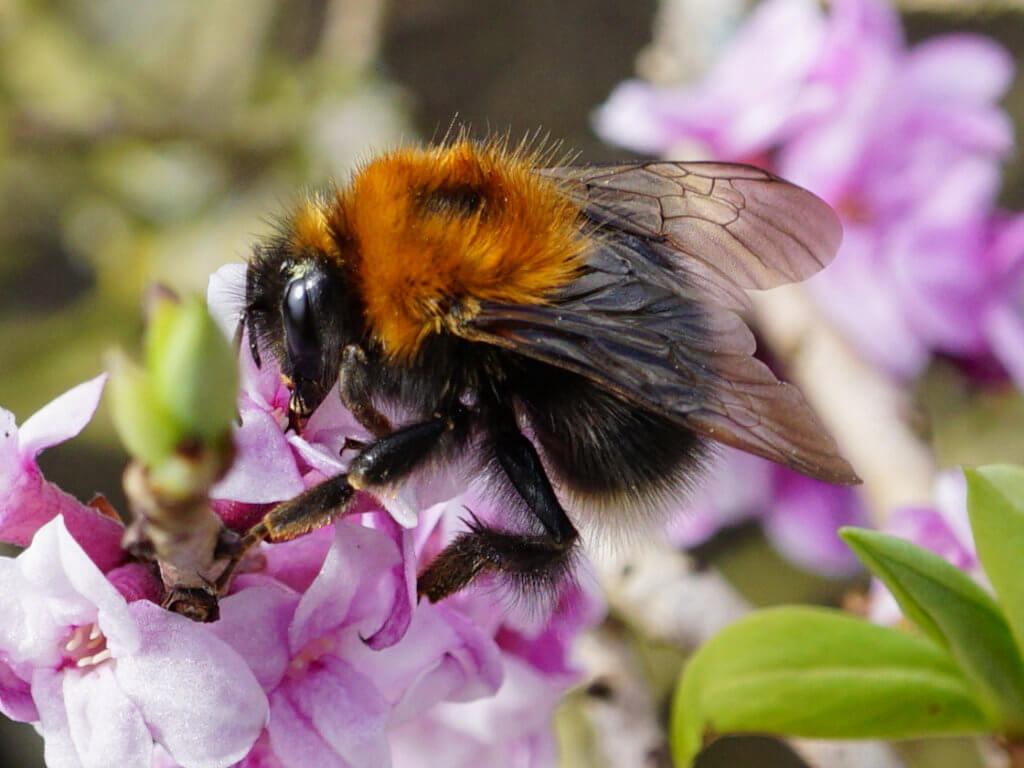
Paul writes: The Tree Bumblebee (Bombus hypnorum) is possibly the easiest British bumblebee to identify. It is the only bumblebee with a combination of ginger thorax, black abdomen and white tail. Queens, workers and males all have the same colour combination so it stands out at any time during the season. This bumblebee is a very recent addition to the UK fauna. It is widespread throughout mainland Europe but was only first discovered in Southampton in 2001. Since then it has spread quickly throughout England and Wales and has reached Southern Scotland, last year it was first recorded in Ireland. Unlike other bumblebees it nests in aerial cavities rather than underground so can be found under the eaves of houses or in cavity walls. It will also colonise unused bird nesting boxes.
As with all bumblebees it begins to emerge in early spring and can be seen regularly in gardens. I have a bed of heather in my garden, which is in full flower in spring, so always attracts the early bees. Tree Bumblebees have been using it for the last couple of weeks, whenever the sun has been shining.
Mark writes: these are the bumblebees that were occupying a nestbox in my garden last year. They were very welcome and provided an interesting focus for several weeks.
[registration_form]
We had them in a nestbox a couple of years ago. Interesting to watch but they buzzed us if we got too close, politely telling us to push off!
One of them flew in the window last year and got stuck. Fearsome great thing to look at. It was eventually ushered out and on its way though. Terrifyingly huge. This is SW Scotland too.
Other bumblebee species will also nest in aerial cavities on occasion. Some years go we had blue tits net building in a nest box on our garden and mysteriously they suddenly stopped bringing materials to the box. The mystery was explained shortly afterwards when we saw a large queen bumblebee flying into the box and a colony was subsequently established. I believe the species was Bombus hortorum.
I have these bees in the cavity wall, will they cause damage, will they return next year and are they protected.